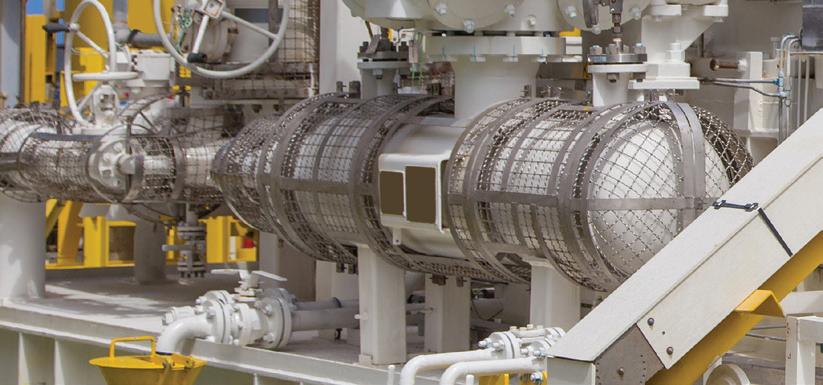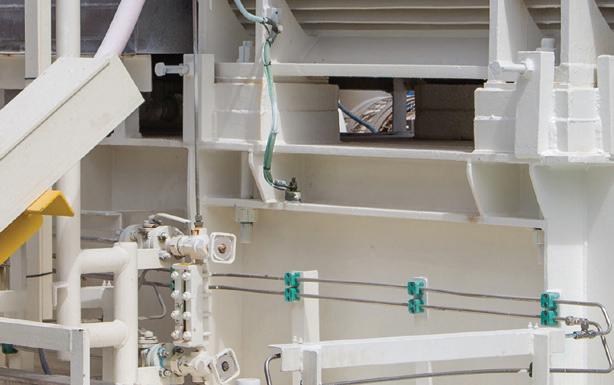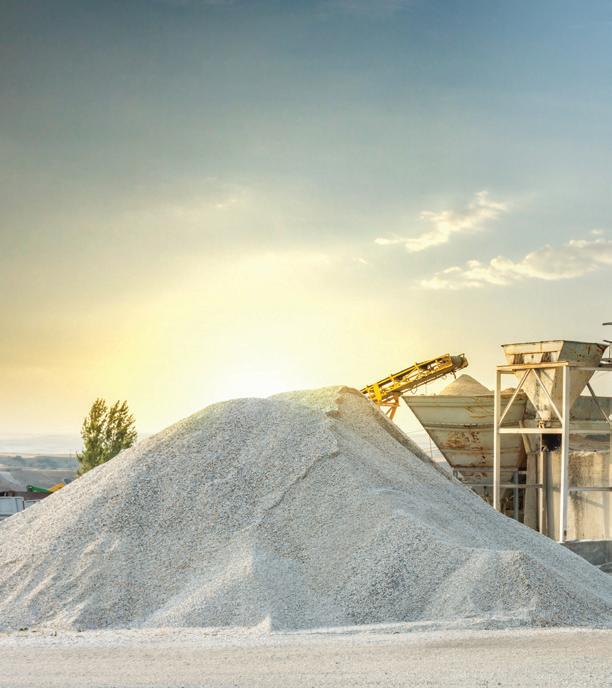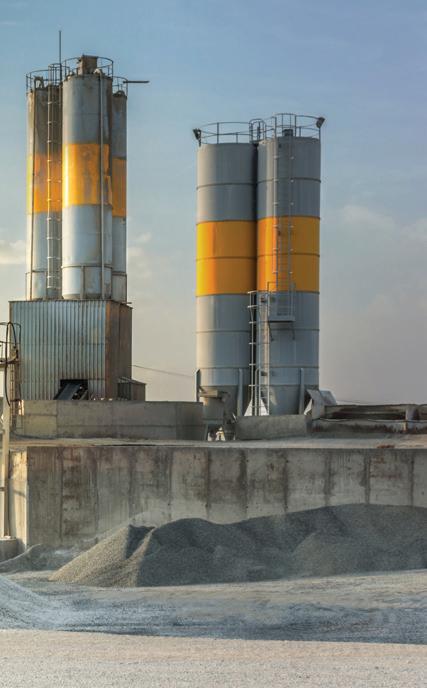
11 minute read
Industrial Electric Gas Boosters Promise Quieter
Industrial Electric Gas Boosters Promise Quieter, Cleaner, HassleFree Operation in Oil and Gas
By: Del Williams
Advertisement
In the oil and gas industry, gas boosters are ubiquitous products working hard and with little fanfare behind the scenes to pressurize liquids and gases to several thousand bar (30-50,000 psi) for leak testing of vessels, valves or piping; charging gas-operated actuators; and high-pressure gas transfer, cylinder charging and scavenging.
Whether utilized as standalone devices or in larger OEM equipment, gas boosters are integral components in many offshore and onshore oil, gas exploration, development, storage, refining and processing applications.
Unfortunately, traditional pneumatic and hydraulic gas boosters have some inherent limitations. Pneumatic (air-powered) units work well to boost pressures at intermittent, low-flow rates, but are extremely noisy during operation. At higher flow rates, the sound is further increased, since multiple units must fire in parallel. This also increases the amount of electricity required. Hydraulic-powered units, on the other hand, are more suited to continuous operation and are slightly quieter than pneumatic options, but come with the potential risk of hydraulic oil contamination of the gas, hydraulic oil leaks and spills.
Now, a new category of advanced electric gas boosters is promising to provide quieter, cleaner, high-pressure, high flow rates up to 6,500 psi – along with improved monitoring and controls for a variety of oil and gas applications.
Gas Boosters in Oil and Gas
Gas Boosters are used to test systems and custom-built OEM products in order to certify that these products meet the exacting standards of the oil and gas industry. The list of gases typically pressurized includes argon, nitrogen, oxygen, hydrogen, helium, carbon dioxide, liquefied gas and many other specialty gases.
One major application in the oil and gas industry is leak testing using nitrogen to ensure the integrity of pressurized systems. Anything from relief valves, pipe spools and small pressure vessels are tested with nitrogen gas to prove they are leak tight before being put into service on gas production facilities.
Gas boosters can also be used for highpressure leak testing of underwater Christmas trees and other subsea installations to ensure hydrocarbons do not leak from the structure and risk contaminating the sea or creating a fire explosion. Helium gas is used at pressures up to 2,000 bar (30,000 psi) because of its leak searching capabilities, particularly in detecting porous castings.
About the author: Del Williams is a technical writer based in Torrance, California. He writes about health, business, technology, and educational issues, and has an M.A. in English from C.S.U. Dominguez Hills.
For more information, call (818) 843-4000 or visit www.haskel.com
Sulphur hexafluoride (SF6) can also be used in leak detection gas.
In addition to leak detection, gas boosters are ideal for nitrogen gas generators, enabling storage within high-pressure gas cylinders, charging nitrogen-filled accumulators and pulsation dampeners and in conjunction with hydraulic power units.
Quieter, Cleaner, More Efficient
Perhaps the most significant drawback of pneumatic and hydraulic industrial gas boosters is the sound levels produced during operation. In some cases, many multiples of the units are used in parallel, particularly when higher flow rates are required. The combined noise generated can be excessive.
“Pneumatic-driven gas boosters are extremely loud during operation, and even louder if multiple units work in parallel, which can make complying with OSHA regulations related to sound levels in the plant more difficult,” says George Volk, Global Director of Sales and Business De

velopment at Haskel, a division of Ingersoll Rand that manufactures gas/ liquid transfer and pressurization technology.
According to Volk, the operation of typical air-operated and hydraulicdriven gas boosters can exceed the 85-dBA threshold and require sound protection in order to satisfy OSHA requirements. In fact, OSHA requires employers to implement a hearing conservation program when noise exposure is at or above 85 decibels averaged over 8 working hours, or an 8-hour time-weighted average.
Hearing conservation programs strive to prevent initial occupational hearing loss, preserve and protect remaining hearing, and equip workers with the knowledge and hearing protection devices necessary to safeguard themselves. Under OSHA’s Noise Standard, the employer must reduce noise exposure through engineering controls, administrative controls, or Hearing Protection Devices (HPDs) to attenuate the occupational noise received by the employee’s ears to within levels specified.
In contrast, advanced industrial electric gas boosters such as the QDrive, which is scheduled for release in early 2020 by Haskel, is much quieter (<77 dBA) during operation, while still offering up to 6,500 psi for high-pressure applications.
“This eliminates the need for regulatory scrutiny, along with hearing conservation programs,” says Volk. “The use of the electric units can
Innovative electric-powered units offer high-pressure, high flow rates along with advanced capabilities beyond traditional pneumatic and hydraulic units
also streamline production, since workers can spend more time in the vicinity without worrying about exceeding the regulations or potential hearing loss.”
In addition to the noise produced (even though it is less than airpowered units), there can be some concern that hydraulic gas boosters might leak or spill hydraulic oil. This can be a deterrent for applications that mandate a certain level of cleanliness
“Whenever you have hydraulics, there is the potential for leaks or spills,” explains Volk. “That is essentially the reason the automotive industry moved away from hydraulics in their production line – because of the potential contamination issues.”
Electric energy consumption is also a concern. Despite being electricpowered, the more advanced units are more energy-efficient than both pneumatic and hydraulically driven boosters.
“Compared to pneumatic gas boosters, advanced electric units use one-third of the energy and offer flow rates 10 to 20 times higher,” says Volk. “Compared to hydraulic boosters, the electric units also provide energy savings due to lower cooling requirements.”
Although there are several electric-driven gas boosters on the market, even within the category there can be significant design differences. Some of the early market entrants are designs that employ a gearbox to convert the rotary motion of the motor to reciprocating, which increases complexity and the amount of maintenance required.
More advanced units are built using a simplified linear servo-electric actuator drive which enhances reliability and reduces the Mean Time Between Failure (MTBF).
Both pneumatic and hydraulic gas boosters can also be difficult to control with much specificity, which makes their operation less efficient. Today’s more advanced units include sophisticated remote and self-diagnostic capabilities. Units such as the Q-Drive come with human machine interface (HMI) and touchpad control to allow operators to monitor and control pressure and temperature closely and easily change setpoints.
Given the inherent drawbacks of pneumatic and hydraulic gas boosters, Volk believes quieter, cleaner, easier operation of electric-powered units will have considerable appeal for oil and gas applications.
“With the considerable R&D investment in these more advanced electric gas boosters, many of the shortcomings of pneumatic and hydraulic units have been resolved and this opens up new possibilities for oil and gas applications at high flow rates and pressures,” concludes Volk.
This is a revised story also published by EngineerLive.com.
Managing Sand Production in Shale: An Overview
By: Vikash Dixit
As menacing as it may be, sand is often required during hydraulic fracturing (fracking) operations. With no alternatives typically available to serve as a proppant, sand is generally utilized along with water to prop open underground fractures for purposes of bringing oil and natural gas to the surface.
The unwanted flow back mixture that sand can cause, including a combination of water, debris, and hazardous chemicals, has created difficulty among hydraulic frackers for more than 70 years — from impairment of surface piping and hazardous leaks to lost time and revenue, and it has been a burden in general to fracking much longer than that.
The need to manage sand flow back, which can accumulate significantly, becomes critical for the successful harvesting of oil and gas, as well as for protecting the environment and those who are conducting the work. Mismanagement of sand while on the job can necessitate frequent cleanups of equipment and the workspace, which results in more downtime and lost production. In order to minimize these negative consequences, appropriate process management can go a long way toward improving the bottom line and having a positive environmental impact. A willingness to take a holistic approach to fracking is ideal for avoiding common complications and maximizing effort.
Common complications and mistakes
Some may be surprised that fracking dates back to at least the 1860s. But, it wasn’t until the 1940s that the practice of hydraulic fracturing actually began as an experiment, followed by the first commercially successful application in 1950.
Some of the commonly occurring mistakes, however, have been timeless and associated with the tendency to try collecting as much as possible in the shortest period of time. This practice is a misstep, often leading to high velocities in the piping. Especially in the initial phase of flowing, an abundance of sand that has been used for fracking comes back through the piping, which can cause erosion and corrosion. In addition, increased velocity often causes holes in the piping — namely in the bends, due to an abrupt change in the direction of flow. In this instance, sand impinges on the wall and creates a hole, which can lead to spills and/or fires. Surface production equipment damage, sand buildup, production deferment, reduction in processing capacity and added costs related to sand disposal are also consequences of the shortcuts that some have taken during the fracking process.
A holistic approach
The controversies associated with fracking are nothing new. While the validity of each can be debated, there are proven technical measures that mitigate the negative effects on the environment and society. In addition, there are operational and functional processes that make the job easier and improve the financial outlook of those in the industry.
Proactive mitigation of the issues faced while fracking can be accomplished in three general steps that are commonly overlooked:
1. Controlling flow velocity to minimize erosion and corrosion in sur
face piping. The secret here is to maintain the optimal, critical velocity in surface piping and equipment. Flowing at a higher velocity can lead to a higher rate of erosion. Erosion models based on industry standards, such as those established by API (RP 14E – Design & Installation of Offshore Production Platform Piping Systems) and other proprietary tools, such as those from DNV, can be used to calculate velocity limit.

2. Optimal sand separating. This can be accomplished by installing high-pressure sand filters in the well flow line. The intent is to remove the majority of produced sand collected there. This will prevent having to manage sand in other surface production equipment, such as in the separators.
3. Modifying internal design of separators.
For example, install additional sand weirs and sand flushing connections so that sand can be cleaned out while the separator is operational.
This eliminates the need to shut down the separator, thus reducing downtime and deferment.
Also, installing additional instrumentation in the separator helps to detect sand levels.
The positives to this methodology include minimized piping erosion and corrosion, less likelihood of hazardous exposure to workers and nearby residents, and long-term cost savings for those conducting the work.
There are cons to consider too. Generally, these are short-term tradeoffs that should be anticipated to develop into long-term positives. For example, additional equipment, such as sand filters, will increase costs and temporarily

lower production, but the long-term goals should outweigh those considerations. That said, companies should conduct research and utilize trial equipment before deciding on a plan. While there is science behind this methodology, tapping into consulting and academia expertise is important too.
Managing the menace
A typical fracking operation can use 2-10 million pounds of sand, and approximately one to two percent of that sand will return to the surface. With a lack of control being the standard, the expectation should also be that the sand separator will stop functioning at some point, due to sand build up, because separating oil, gas and water from the sand is not sustainable for the duration of the job. Shutting down the separator is inevitable if proactive measures are not taken, as are real risks to safety.
Even though just one to two percent of the total sand used returns to the surface, in real terms it could be hundreds of pounds that must be managed and disposed of. If measures are in place, such as an upstream hydro cyclone sand filter, then less sand will go into the separator and a total temporary or permanent shutdown is less likely. When design modifications are made in the separator, even when sand accumulates, service can continue by running a hose occasionally for cleaning while operating.
Emerging trends and future implications
The following list of novel technologies could have interesting impacts on the industry’s future:
No-man entry tank cleaning technologies, including robotics such as Re-Gen
Automated, mobile and modular, non-man entry oil tanks, such as the BLABO® system
Online desanding systems, such as Altrad vacuuming
Sand level detection technologies, such as Acoustic Sand Detectors
Vessel sparging systems, such as Stork
Vibrating fork technology, such as Emerson
Flow testing services, such as TechnipFMC
Hydraulic fracturing requires a precise approach and a willingness to focus on long-term outcomes versus the short-term rush to collect. Holistic processes can mitigate common difficulties associated with the presence of sand, and trending modalities may help navigate the nuances of the strategies suggested in this article, which will go a long way to impacting businesses and the environment.
About the Author: Vikash Dixit, P.Eng., is an engineering professional with 35 years of experience specializing in the upstream sector for the oil and natural gas industry. Adept in process engineering, flow assurance, discipline management, sour gas, offshore operations, production and drilling, he is a recognized industry expert who helps to improve processes and equip engineers with best practices. For further information, please email: Vikash_d@hotmail.com.






